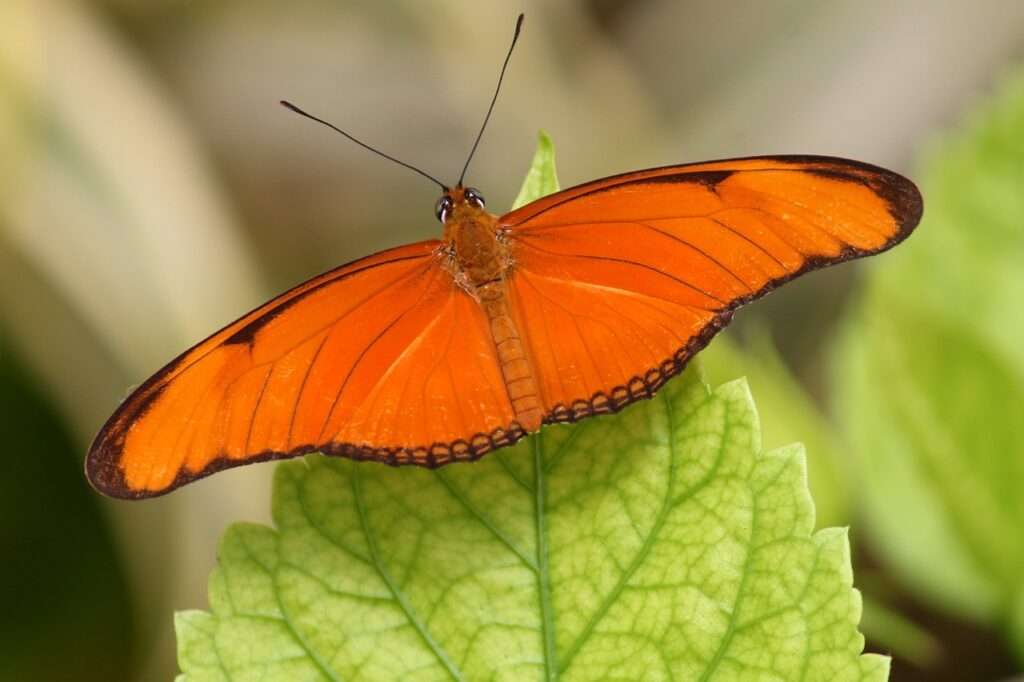FLAME BUTTERFLY
Dryas iulia

Length

90 mm
weight

4 g
Lifespan

2 months
The flame butterfly belongs to the family Nymphalidae and is the only member of the genus Dryas. It is orange with narrow black margins and elongated wings.
General characteristics
As mentioned above, they are orange, but the females are darker in colour than the males. The eggs, on the other hand, are lemon-yellow in colour. To defend itself when it is still a larva, it releases chemicals that are toxic to predators.
It flies quickly and likes to fly in clearings, along paths and at the edges of forests and woodlands. They are often found in butterfly gardens because they are a long-lived species.
Feeding
The larvae feed on different species of passionflower. Adults feed on the nectar of flowers such as lantana, shepherd’s needle and alligator tears.
Behaviour
Several butterfly species, including this one, have a rather peculiar social behaviour in mud. The males crowd around the wet soil in order to drink the minerals that are dissolved by a process of water filtration. They will then use these nutrients for copulation. This butterfly species tends to stay close to members of its own species.
Reproduction
The reproduction of this species is divided into three very clear phases: aerial, air-ground and terrestrial. First they start by flying together, the male always flying ahead and above the female so that she can smell his scales. If the female has enjoyed the courtship, she prepares for mating.
Mating can take place within two weeks of emerging from the chrysalis. Unlike the zebra butterfly, females of this species can reproduce up to four times in their lifetime.
Threats
These butterflies have no outstanding threat, in fact, they are an invasive species. A butterfly farm in Thailand used to release them during Buddhist ceremonies and weddings and they are now widespread in the region.
Distribución
It is found in tropical and subtropical areas of North America, Central America and South America. More specifically, it can be found in countries such as Brazil, Ecuador and Bolivia, Cuba and Puerto Rico, or Texas and Florida.
This species can even be found in the Nebraska area during the summer.

Did you know?
The name iulia is often misspelled, as it is never spelled “julia”.
They irritate the eyes of alligators in order to feed on their tears.
By ingesting traces of cyanide as caterpillars, they become unpalatable to predators even as adults.
Conservation status
